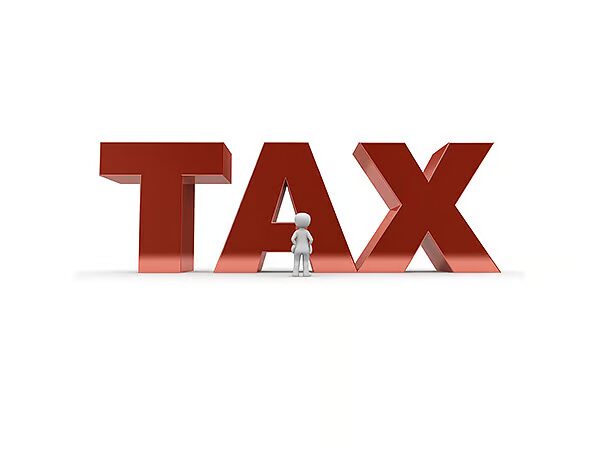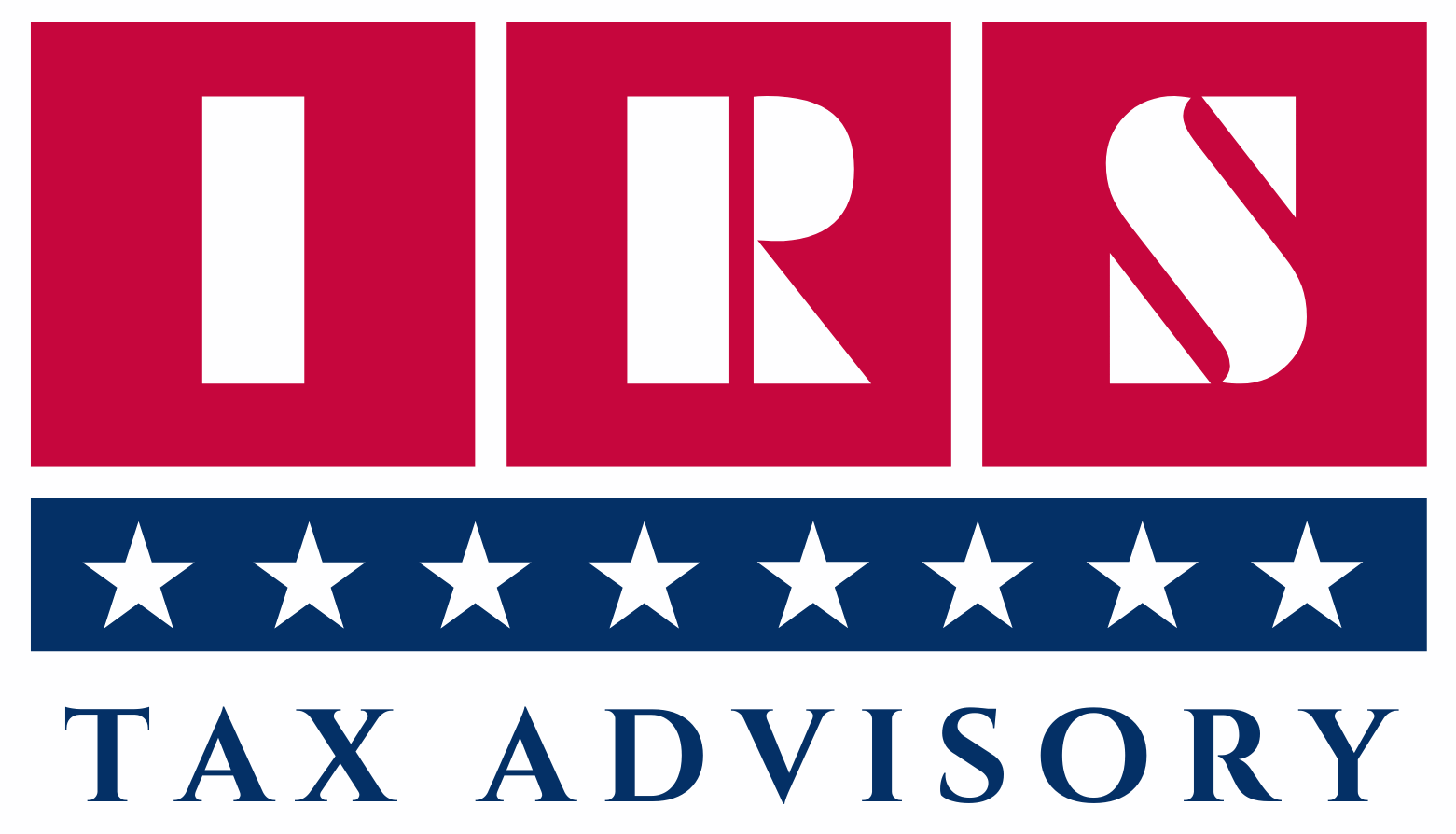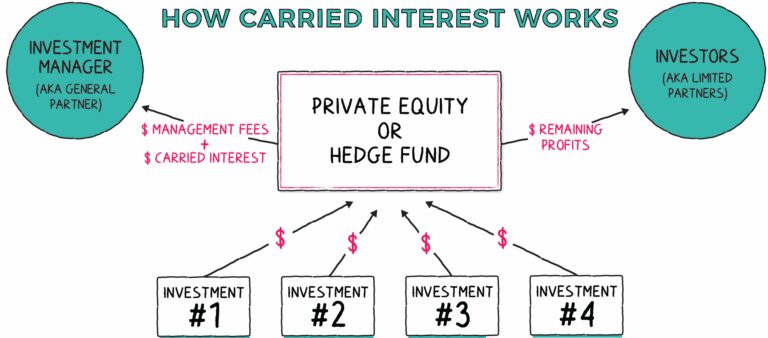California Tax Withholding Form- Top Detailed Guide In 2025
Table of Contents
California tax withholding form are essential documents used by both employees and employers to report and manage income tax withholding at the state level. These forms help ensure that the correct amount of California state income tax is withheld from an employee’s wages throughout the year.
This guide covers:
- What California tax withholding is
- Types of California withholding forms
- When and how to file
- Employer and employee responsibilities
- Compliance tips and penalties
What Is California Tax Withholding Form?

California tax withholding is the process by which employers deduct a portion of an employee’s wages to prepay California state income taxes. This system helps employees avoid large tax bills at the end of the year and ensures that the state collects revenue regularly. California tax withholding relies on specific state-issued forms that determine how much state income tax is withheld from an individual’s income. These forms are distinct from their federal counterparts and are required for a variety of situations—from wages to pensions to sick pay.
Below is an in-depth explanation of each California withholding form, including its purpose, use cases, and how to complete it.
1. Form DE 4 – Employee’s Withholding Allowance Certificate
Purpose
The DE 4 is California’s state-specific equivalent to the federal Form W-4. It tells the employer how much state income tax to withhold from an employee’s wages. Unlike the W-4, which applies only to federal taxes, the DE 4 is used only for California state tax withholding.
Who Should Use This Form?
- New employees
- Existing employees with changes in marital status, dependents, or financial situation
- Individuals who wish to claim exemption from withholding
- Employees adjusting additional withholding amounts
Detailed Breakdown of DE 4 Sections:
Section 1: Personal Information
- Full legal name
- Social Security Number (SSN)
- Address
- Filing status (Single, Married, or Head of Household)
Section 2: Regular Withholding Allowances
- This is where you claim allowances that reduce the amount of tax withheld.
- Use the DE 4 Worksheets A – D (included in the form) to calculate this based on:
- Number of dependents
- Child tax credits
- Other tax credits
Section 3: Additional Allowances (Worksheet B)
- Claim additional allowances for deductions such as mortgage interest, charitable contributions, or job-related expenses.
Section 4: Additional State Withholding
- Enter a specific dollar amount to be withheld from each paycheck, in addition to the amount determined by your claimed allowances.
Section 5: Exemption From Withholding
- Claim this only if:
- You had no California tax liability last year, AND
- Expect none this year
- Must be renewed annually
Section 6: Signature and Date
- A signed form is mandatory. Employers cannot act on an unsigned or incomplete DE 4.
Key Considerations
- If no DE 4 is submitted, the employer must use the default withholding (Single with zero allowances), which can result in over-withholding.
- The DE 4 is not submitted to the EDD; it stays with the employer.
2. Form DE 4P – Withholding Certificate for Pension or Annuity Payments
Purpose
Form DE 4P is used by retirees or beneficiaries receiving pension or annuity income to:
- Elect optional withholding of California state income tax, or
- Indicate that they want no withholding if eligible
Who Should Use This Form?
- Retired employees receiving distributions from:
- 401(k)s
- IRAs
- Public or private pensions
- Annuity contracts
Key Sections
- Personal information
- Withholding election options:
- Do not withhold
- Withhold using tables based on marital status and allowances
- Withhold a specific dollar amount
If no DE 4P is submitted, mandatory withholding may apply for certain distributions.
3. Form DE 4S – Request for State Income Tax Withholding From Sick Pay
Purpose
Form DE 4S is designed for employees receiving sick pay from a third-party payer (e.g., an insurance company or disability provider) who wish to request state income tax withholding.
Who Should Use This Form?
- Employees who are:
- On short-term or long-term disability
- Receiving employer-paid or insurance-paid sick pay
- Individuals who want California income tax withheld voluntarily from such payments
Key Fields
- Personal information
- Employer’s name
- Third-party payer (insurer) name and address
- Requested withholding amount (must be a flat dollar figure per payment)
California law does not require withholding from sick pay, but employees can elect it to avoid year-end tax liabilities.
4. Federal Form W-4 – Used as a Backup in California
Purpose
Although Form W-4 is a federal form, it is referenced in California when:
- An employee does not complete a DE 4
- The employer opts to use the federal W-4 structure but must apply California state tax tables
Important Note
California law does not allow employers to use the W-4 in place of the DE 4 for state tax unless:
- DE 4 is unavailable, or
- The employee expressly chooses not to submit one
Employers must still calculate withholding based on California income tax tables, even when using W-4 data.
Comparison Table – California Withholding Forms
| Form | Use Case | Who Fills It | Submitted To | Special Notes |
| DE 4 | State withholding for wages | Employees | Employer | Must be kept on file; not sent to EDD |
| DE 4P | Pension or annuity income | Retirees/beneficiaries | Pension payers | Optional unless distribution is mandatory withholding type |
| DE 4S | Sick pay income | Employees | Third-party payers | Voluntary; used for better tax planning |
| W-4 | Federal withholding | Employees | Employer | Not a substitute for DE 4 for California tax |
Final Tips for Employees & Employers
Employees Should
- Fill out a DE 4 at the time of hire
- Review their tax situation annually or when circumstances change
- Avoid over- or under-withholding to prevent surprises at tax time
Employers Must
- Retain DE 4s and related forms for 4+ years
- Use California tax tables/formulas
- Submit wage and withholding info quarterly to the EDD
Employer Withholding Responsibilities in California
Registration
Employers must register with the California Employment Development Department (EDD) for a Payroll Tax Account Number before withholding taxes.
Withholding and Remittance
Employers must:
- Use California tax tables or formulas to determine withholding
- Deduct tax from each paycheck
- Remit withholdings to the EDD on a periodic basis (monthly, semiweekly, etc.)
Reporting
Employers are required to:
- Submit Quarterly Contribution Return and Report of Wages (DE 9)
- Submit Quarterly Contribution Return and Report of Wages (Continuation) (DE 9C)
- Provide W-2 forms to employees and the EDD by January 31
Filing Instructions for California Form DE 4
(Employee’s Withholding Allowance Certificate)
Form DE 4 is used by employees in California to calculate and inform their employer of the appropriate amount of California Personal Income Tax (PIT) to withhold from wages. It serves as the state-specific alternative to the federal Form W-4.
When to File DE 4
You must file Form DE 4 with your employer in the following situations:
- New Employment – At the time of being hired.
- Change in Personal or Financial Status – If your marital status, dependents, or other withholding factors change.
- Claiming Exemption – If you qualify to claim exemption from California PIT withholding.
- Adjusting Withholding – If you want to increase or decrease the amount withheld.
Key Sections and Instructions
1. Personal Information
- Name – Use your full legal name.
- Social Security Number – Required to match wage records.
- Home Address – Must be your current mailing address.
- Filing Status – Choose one:
- Single or Married (with two or more incomes)
- Married (one income)
- Head of Household
The selected filing status affects how much tax is withheld.
2. Regular Withholding Allowances
Use the included Worksheet A to calculate the number of allowances to claim based on:
- Personal exemptions
- Dependents
- Head of Household status
Enter the total number of allowances on the corresponding line in this section.
3. Additional Withholding
You can enter:
- A specific dollar amount of additional tax to be withheld from each paycheck.
- This is useful if you have other sources of income or want to cover tax owed from past years.
4. Exemption From Withholding
To claim exemption from state withholding, you must:
- Had no California tax liability last year, and
- Expect to have no California tax liability this year.
If eligible, write “EXEMPT” in the space provided.
Note: The exemption is valid for one year and must be renewed annually.
5. Signature and Date
- The form must be signed and dated to be valid.
- Unsigned or incomplete forms cannot be processed by the employer.
Submission Instructions
- Do NOT submit Form DE 4 to the California Employment Development Department (EDD).
- Instead, submit it directly to your employer’s payroll or HR department.
- Your employer must retain the form for their records and for compliance with payroll tax reporting.
Updating the DE 4
Update your DE 4 form when:
- Your number of dependents changes (e.g., birth, death, custody change)
- You or your spouse start a second job
- Your tax situation changes due to property ownership, deductions, etc.
You may file a new DE 4 at any time to adjust your withholding amount.
Helpful Tips
- Use the Withholding Worksheets (included in the form packet) to ensure accuracy.
- Overestimating allowances may lead to under-withholding and tax due at year-end.
- Underestimating allowances may cause over-withholding and smaller take-home pay.
Employer’s Responsibility
- Employers must retain the DE 4 in the employee’s file.
- Employers are not required to send the DE 4 to the EDD.
- If no DE 4 is submitted, employers must default to Single with zero allowances.
Claiming Exemptions on California Form DE 4
(Employee’s Withholding Allowance Certificate)
California Form DE 4 allows employees to claim exemptions from state income tax withholding under certain conditions. Understanding when and how to claim exemption is essential to ensure compliance while avoiding unnecessary withholding or penalties.
What Does It Mean to Claim “Exempt”?
Claiming “exempt” on DE 4 means that you are stating you are not subject to California Personal Income Tax (PIT) withholding for the current tax year. As a result:
- Your employer will not withhold California PIT from your paycheck.
- You are asserting that you will owe no state income tax when you file your return.
Important: This exemption only applies to California state tax, not federal tax.
Who Is Eligible to Claim Exemption?
You can only claim exemption from California PIT if both of the following are true:
- You had no California income tax liability last year, and
- You expect to have no California income tax liability this year.
Examples of Situations That May Qualify
- You had very low or no income last year and anticipate the same this year.
- You are a dependent with little to no taxable income.
- You receive income only from sources not subject to California tax.
- You live and work outside California but received a California tax form in error.
If either of the two conditions is not met, you cannot legally claim exemption.
How to Claim Exempt on Form DE 4
To properly claim exemption:
- Do not complete the worksheet or allowance section of the form.
- In the designated exemption section, write “EXEMPT” in the space provided.
- Sign and date the form. An unsigned form is invalid.
Employers will treat you as exempt from withholding only if “EXEMPT” is clearly written and the form is signed.
How Long Is the Exemption Valid?
- The exemption is only valid for the calendar year in which the DE 4 is submitted.
- You must file a new DE 4 form by February 15 of each year to renew your exempt status.
If You Do Not Submit a New DE 4
Your employer is required to begin withholding tax using the default rate (Single, 0 allowances).
Special Considerations
- Claiming exempt does not mean you are exempt from filing a California tax return.
- If your income or circumstances change midyear, you must update your DE 4 immediately.
- False exemption claims may result in back taxes, penalties, and interest.
Do Not Use the Federal W-4 to Claim Exemption in California
Form DE 4 is the only accepted form for California PIT exemptions. Unlike the federal Form W-4, DE 4 reflects California’s own tax laws and allowance system.
Final Tips for Employees
- Only claim exemption if you are absolutely certain you qualify.
- Use the worksheet on DE 4 if unsure—if it results in zero tax liability, you may be eligible.
- If unsure, consult a tax professional or refer to Edd Official Guidance.
When to Update Form DE 4
(California Employee’s Withholding Allowance Certificate)
California Form DE 4 should reflect your current personal and financial circumstances to ensure accurate withholding of state income tax. If your circumstances change, updating this form promptly helps avoid both under-withholding (leading to tax due) and over-withholding (reducing take-home pay).
Key Situations That Require an Update to DE 4
You should submit a new DE 4 to your employer as soon as any of the following apply:
1. Change in Marital Status
- You get married or divorced
- You become widowed
- You legally separate
These changes may affect your filing status (Single, Married, or Head of Household) and the number of allowances you claim.
2. Change in Number of Dependents or Allowances
- You have a child (birth or adoption)
- A dependent leaves your care
- You begin or stop claiming a spouse or parent
- You take on new financial dependents
This directly impacts the allowance count and your withholding amount.
3. Change in Income or Employment
- You start or stop working a second job
- Your spouse gains or loses employment
- You receive bonus, commission, or lump-sum income
- Your household income significantly increases or decreases
Income shifts may require you to adjust additional withholding to avoid surprises at tax time.
4. Change in Filing Status or Tax Liability Expectation
- You become eligible or ineligible for Head of Household
- You become eligible to claim exemption from withholding (or stop qualifying)
- You experience a change in eligibility for tax credits or deductions
For example, if you claimed EXEMPT last year but now expect to owe tax, you must file a new DE 4 with correct withholding.
5. You Want to Adjust Withholding for Any Reason
You may voluntarily update your DE 4 at any time to:
- Withhold more to cover other income or avoid estimated payments
- Withhold less if your allowances have increased
- Update your additional withholding amount (flat dollar amount)
When Must You Update by Law?
If you previously claimed exemption from withholding, the law requires that you:
- Submit a new DE 4 by February 15 of the current year, or
- Your employer must default to withholding at Single with zero allowances
How to Submit an Updated DE 4
- Download a blank DE 4 form from the EDD website
- Complete the form with your updated information
- Submit the signed form to your employer’s payroll or HR department
- Keep a copy for your own records
Penalties and Compliance Risks for California State Tax Withholding
California’s Employment Development Department (EDD) requires strict compliance with state income tax withholding regulations. Both employees and employers face potential penalties, interest, and legal consequences for errors, misreporting, or noncompliance related to Form DE 4 and tax withholding responsibilities.
For Employees
1. Falsely Claiming Exemption
Claiming “EXEMPT” on DE 4 when you do not qualify can result in:
- Back taxes owed at year-end
- Penalties for underpayment
- Interest charges on unpaid taxes
- Possible audits or scrutiny from the Franchise Tax Board (FTB)
Example: An employee falsely claims exemption but earns $30,000. When the state finds out no taxes were withheld, the employee must pay the full liability, plus penalties.
2. Failure to Update Withholding
Not updating your DE 4 after a major life change (marriage, divorce, new job, dependent loss) can cause:
- Under-withholding → leading to a surprise tax bill
- Over-withholding → lowering your take-home pay unnecessarily
- IRS or FTB audits if withholding patterns look unusual
3. Neglecting Annual Exemption Renewal
Employees who claimed exemption must submit a new DE 4 by February 15 of the current year. If they don’t:
- Employers must automatically revert to Single with zero allowances
- Withholding may increase significantly mid-pay period
For Employers
1. Failure to Retain DE 4 Forms
Employers must retain DE 4 forms in employee records. Failure to do so can lead to:
- Penalties for poor recordkeeping
- Liability if withholding errors are discovered
- Issues during EDD audits or reviews
2. Incorrect Withholding
Employers must withhold based on:
- The employee’s filed DE 4, or
- Default (Single, 0 allowances) if no DE 4 is submitted
Incorrect withholding or failure to withhold properly may result in:
- EDD penalties and interest
- Employer being held liable for unpaid tax
- Wage garnishments or legal actions
3. Late Deposits or Reports
Late submission of withheld tax or wage reports (e.g., DE 9, DE 9C) may cause:
- Penalties up to 15%
- Interest on late payments
- Possible suspension of state licenses or tax clearance delays
Common Penalties
| Violation | Penalty |
| Late deposit of withheld taxes | 2%–15% of the unpaid amount, depending on delay |
| Failure to file payroll tax returns | $10 to $100 per employee, per report |
| Incorrect or missing employee withholding | Liability for full amount plus 10–25% penalty |
| Willful misclassification (e.g., contractors) | Civil and criminal penalties, up to $25,000 |
Best Practices to Avoid Penalties
For Employees
- Review DE 4 annually or after life events
- Use the Withholding Calculator on the EDD site
- Keep copies of submitted forms
For Employers
- Require DE 4 upon hiring and annually for EXEMPT claims
- Train HR/payroll on withholding rules
- Maintain clean DE 4 records and backup documentation
- Submit withholding deposits and reports on time
Red Flags That May Trigger Compliance Audits
- Frequent “EXEMPT” claims across workforce
- Inconsistent withholding on similar employee classes
- Pattern of underreported wages or late filings
California Withholding Tax Calculation
California’s PIT withholding is calculated based on:
| Factor | Description |
| Gross wages | Your earnings before deductions |
| Filing status | Single, Married, or Head of Household (declared on DE 4) |
| Number of allowances | Claimed on Form DE 4 to reduce taxable income |
| Pay frequency | Weekly, bi-weekly, monthly, etc. |
| Additional voluntary withholding | Optional flat amount added per paycheck |
| Exempt status | If EXEMPT is claimed, no state tax is withheld |
Step-by-Step Calculation Breakdown
1. Determine Gross Pay Per Pay Period
E.g., $3,000 monthly salary
2. Subtract Pre-Tax Deductions
If applicable: retirement contributions, health premiums, etc.
3. Apply Allowances
Each allowance reduces the amount of taxable income. California defines each allowance as a set dollar value (e.g., ~$150/month in 2025, but this changes annually).
4. Use PIT Withholding Tables
Employers refer to the California PIT withholding schedules (from the EDD) based on the remaining taxable income, pay period, and filing status.
Example:
- Monthly pay: $3,000
- 2 allowances reduce taxable wages by $300
- Net taxable: $2,700
- Using the monthly PIT table, the tax may be ~$80–$120 depending on filing status
5. Add Any Additional Withholding
If the employee requested extra withholding (e.g., $50 per paycheck), this is added.
6. Total Withheld Amount
The final withholding is the state income tax withheld per paycheck, which appears on the employee’s pay stub and W-2 (Box 17).
Example Calculation (Hypothetical)
| Item | Amount |
| Gross monthly pay | $4,000 |
| Pre-tax deductions | $300 |
| Taxable income | $3,700 |
| Allowances (2 × $150) | -$300 |
| Net PIT taxable income | $3,400 |
| Withholding (from table) | $125 |
| Voluntary extra withholding | $50 |
| Total tax withheld | $175 |
Key Influencers of Withholding Tax
| Influencer | Impact |
| More allowances claimed | Less tax withheld |
| EXEMPT status claimed | No state tax withheld |
| Lower pay frequency | May reduce withholding per check |
| Bonus/lump sum income | May increase one-time withholding |
| Incorrect DE 4 info | May lead to over/under withholding |
Tools and Resources
California Withholding Tables (EDD):
Annual charts published by the EDD, based on wage brackets and filing status.
California Withholding Calculator:
Interactive tool that gives personalized estimates:
EDD Calculator
Form DE 4:
Employee uses this to declare allowances and request changes in withholding.
Common Errors in Withholding Calculations
| Error | Risk |
| Failing to file DE 4 | Employer defaults to Single, 0 allowances |
| Claiming EXEMPT incorrectly | Results in large year-end tax bill |
| Ignoring second income/job | Causes under-withholding |
| Not accounting for bonuses | Unexpected tax surprise at year-end |
When to Recalculate Withholding
- New hire or job change
- Marriage, divorce, or new dependents
- Taking or leaving a second job
- After receiving a bonus or severance
- Each start of tax year (January or February)
Final Takeaways
- California withholding tax is not flat—it’s progressive, based on brackets.
- Use the calculator or tables with accurate DE 4 information.
- Always update your withholding after life events or income changes.
- Employers must calculate and remit PIT withholding accurately and timely.
California Withholding Calculator
(EDD Income Tax Estimator Tool)
The California Withholding Calculator is an online tool provided by the Employment Development Department (EDD) to help employees and employers estimate accurate state income tax withholding amounts based on the employee’s income, filing status, and allowances.
Purpose of the Withholding Calculator
The primary goal of the calculator is to help:
- Employees avoid underpayment or overpayment of state income tax.
- Employers calculate appropriate withholding amounts when DE 4 is updated or missing.
- New hires determine how many allowances to claim on Form DE 4.
- Anyone planning for life changes (marriage, child, second job, etc.) to estimate revised withholding.
How the Calculator Works
The EDD calculator uses inputs provided by the user and applies California’s Personal Income Tax (PIT) formula to estimate how much should be withheld per pay period.
Inputs Typically Required
- Filing status (Single, Married, Head of Household)
- Number of dependents or allowances
- Wages per pay period
- Pay frequency (weekly, bi-weekly, monthly, etc.)
- Additional income or deductions (e.g., other jobs, bonuses)
- Voluntary additional withholding amounts (optional)
Output Provided
- Estimated withholding per pay period
- Recommendations on how many allowances to claim
- Whether you may owe or get a refund based on current withholding
Ideal Use Cases
| User | Purpose |
| New hires | To determine proper withholding before completing Form DE 4 |
| Employees with life changes | To revise DE 4 after marriage, divorce, new child, etc. |
| Employees with multiple jobs | To avoid under-withholding across jobs |
| Tax planners | To model different withholding strategies |
| HR/payroll departments | To help employees adjust allowances and avoid tax issues |
Best Practices
For Employees
- Use the calculator annually or after major life events
- Cross-check with your year-to-date earnings
- Adjust DE 4 immediately if the calculator shows under-withholding
For Employer
- Encourage new hires to use it before submitting Form DE 4
- Use it to verify estimated withholding when DE 4 seems incorrect or unclear
- Keep calculators handy during open enrollment or onboarding sessions
Common Mistakes to Avoid
- Ignoring second job income — can cause under-withholding
- Claiming too many allowances without supporting dependents or deductions
- Assuming federal and state withholding are identical — California has its own rules
The calculator is confidential and easy to use. It provides a customized withholding recommendation without storing personal data. While it doesn’t replace tax advice, it’s a powerful tool to stay compliant and financially prepared.
Conclusion
Filing the correct California tax withholding form, especially DE 4, is essential for ensuring accurate state tax withholding. Employees should review and update their forms annually, while employers must adhere strictly to California’s EDD requirements for withholding, remitting, and reporting.
FAQs
Is DE 4 mandatory?
Yes. Employees must complete DE 4 to determine state withholding unless the employer chooses to rely solely on the W-4 and CA formulas.
How often should I update DE 4?
At least annually or when your personal or financial situation changes.
Can I submit DE 4 online?
No. DE 4 must be printed, signed, and submitted to your employer directly.






